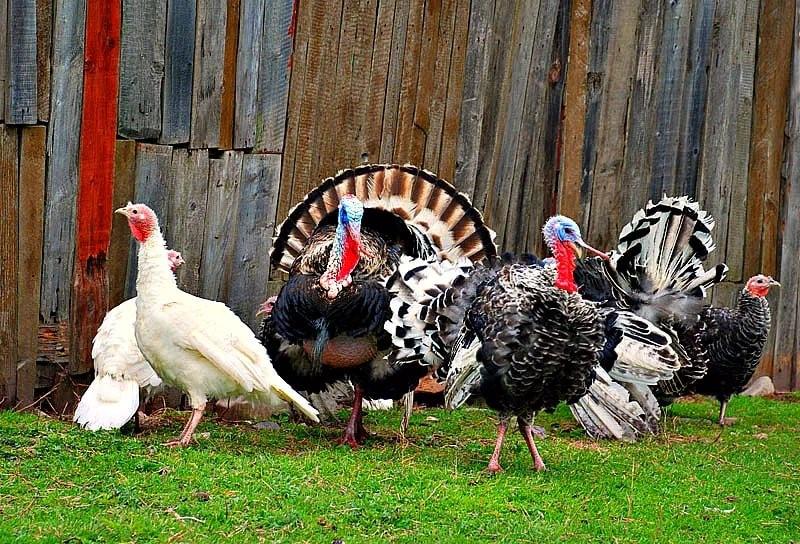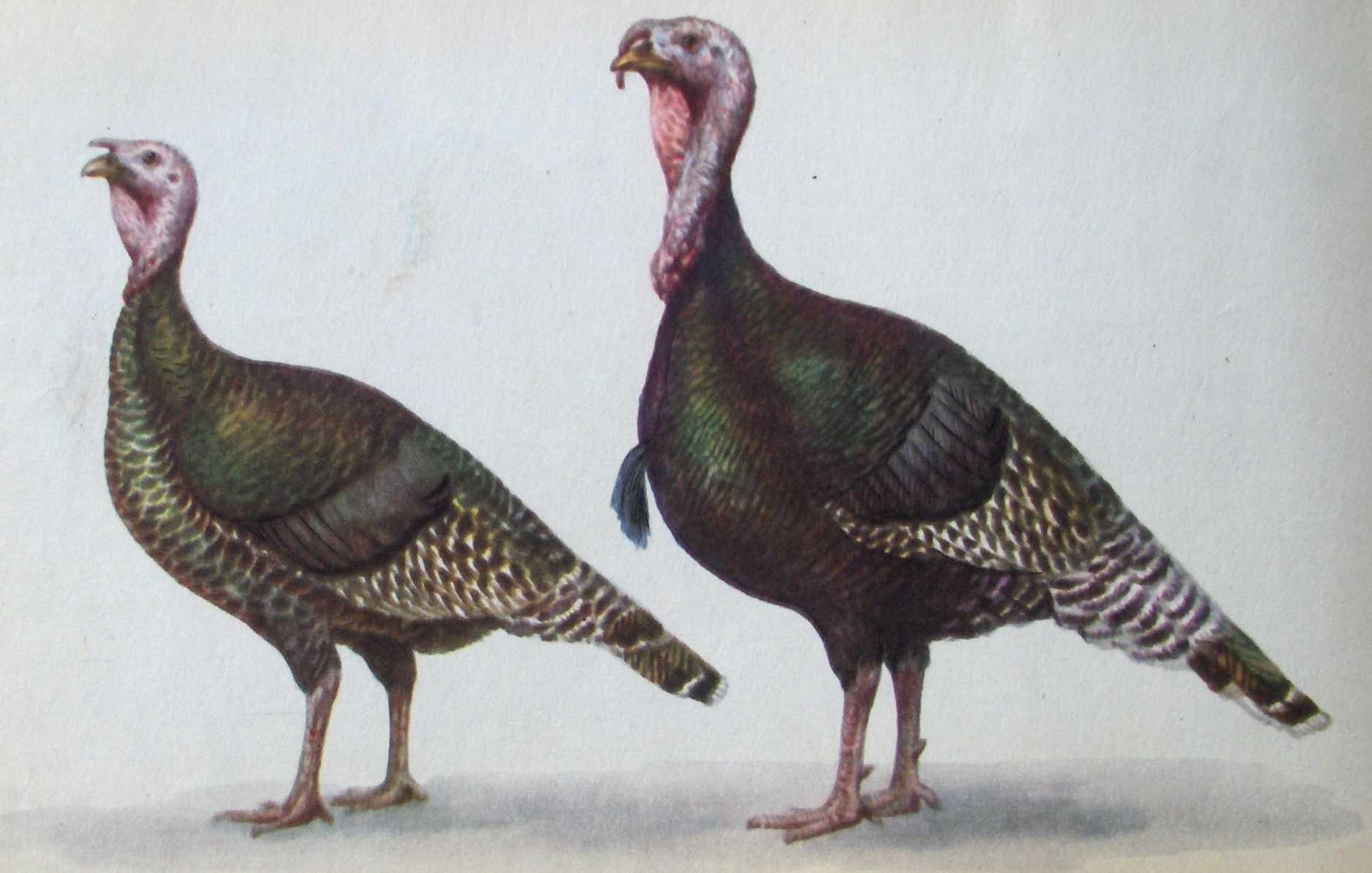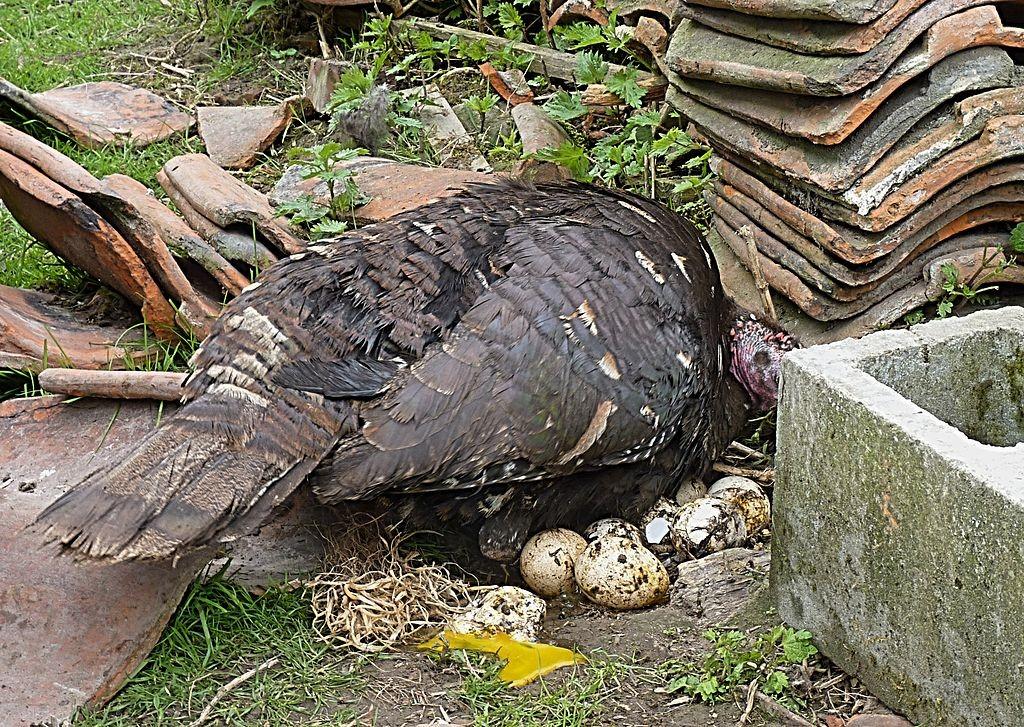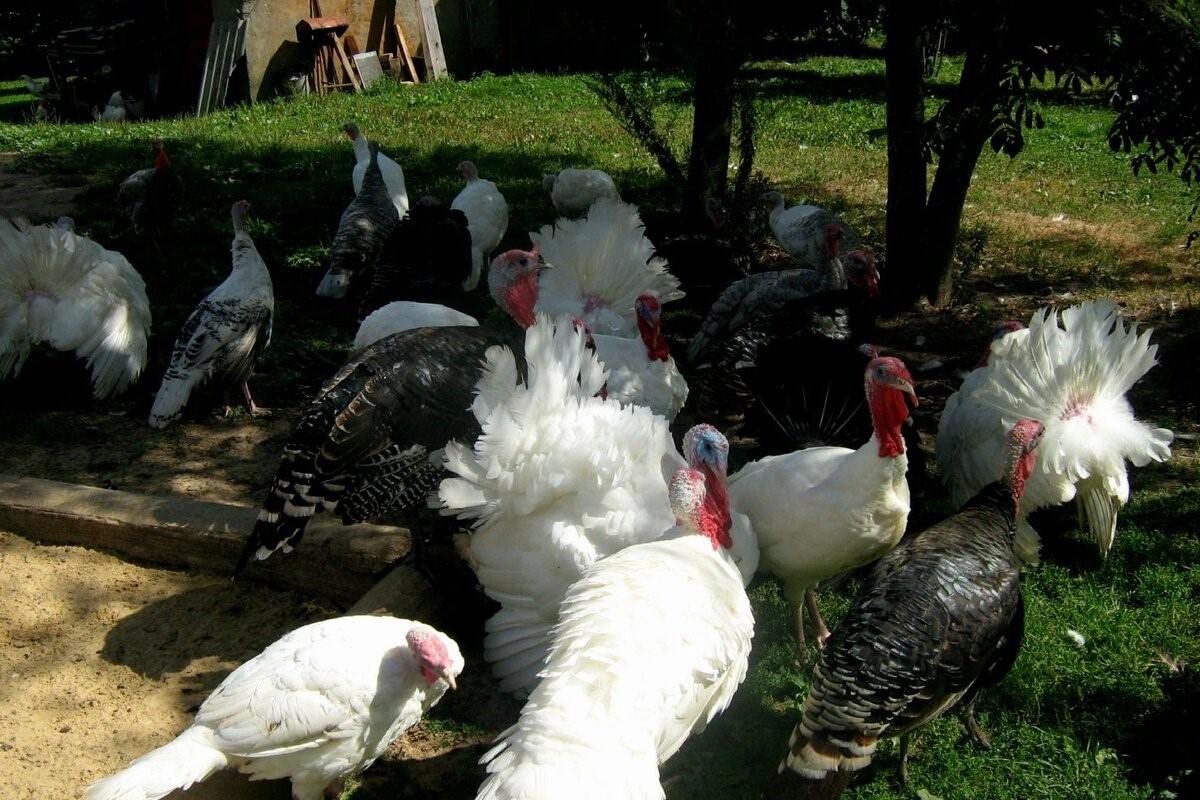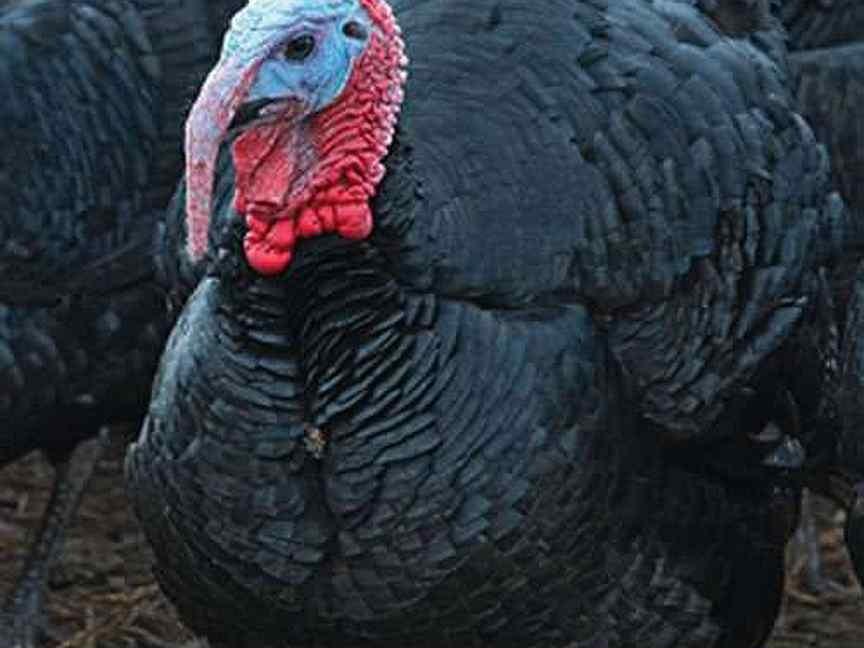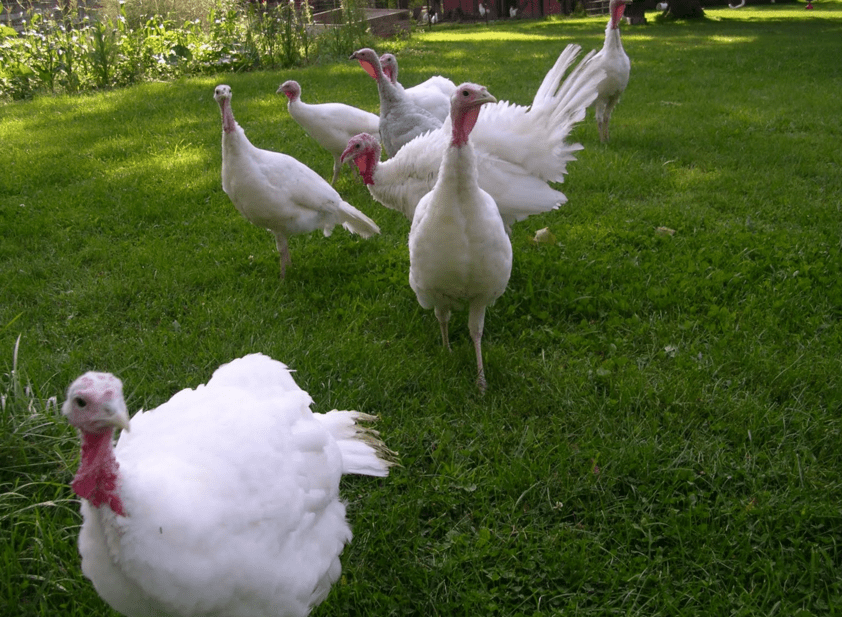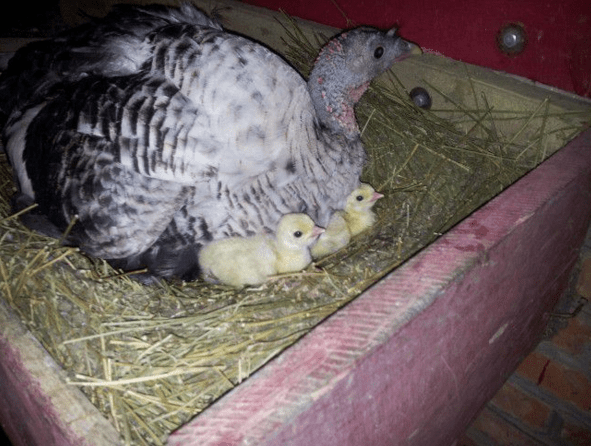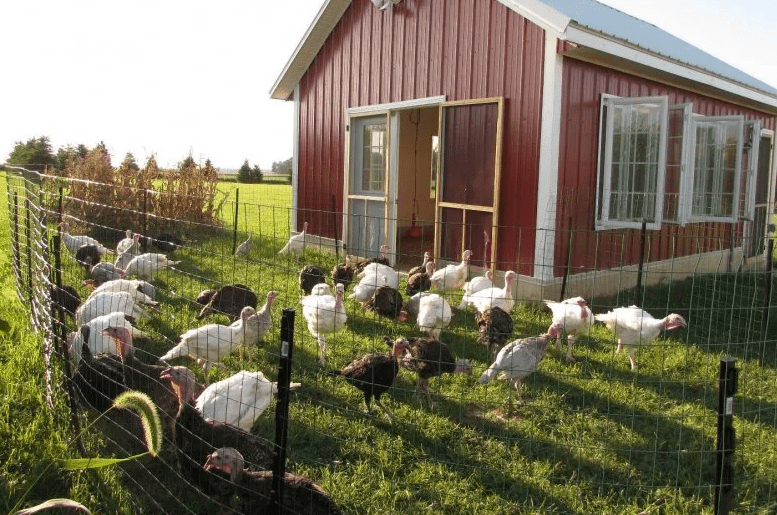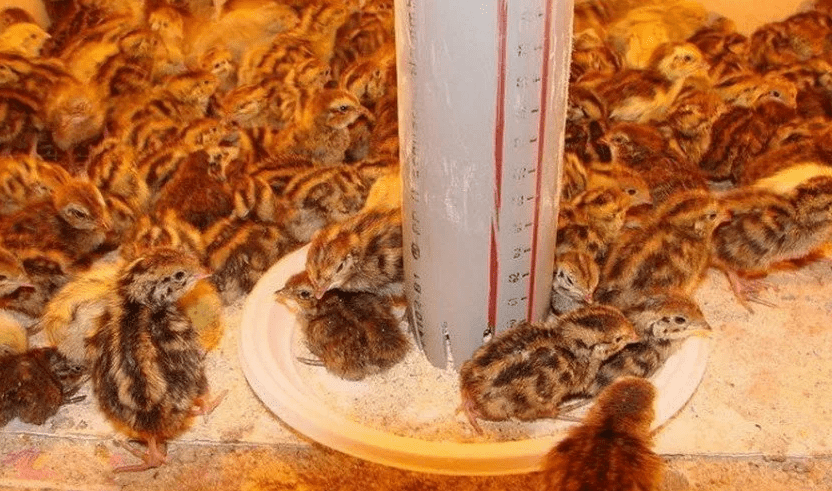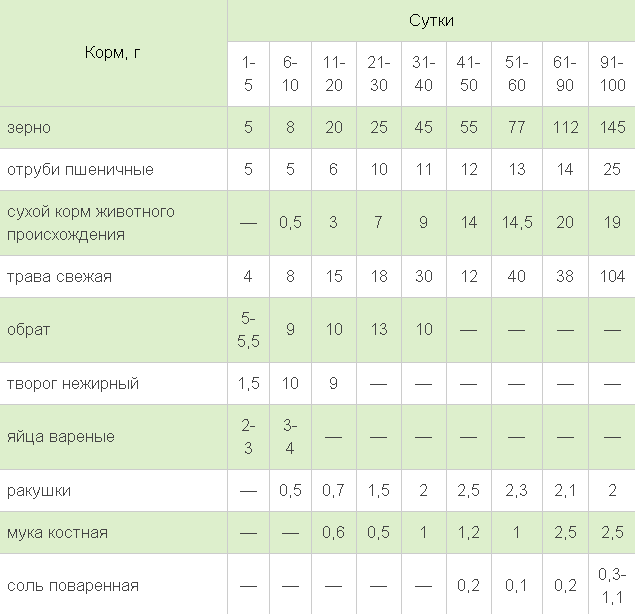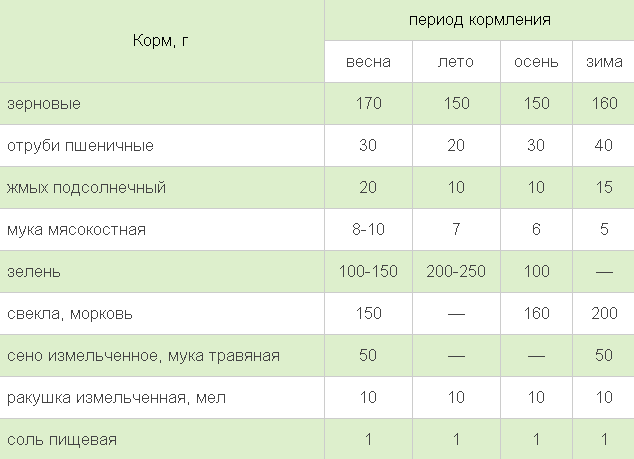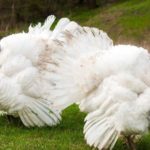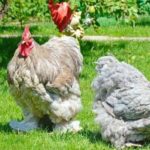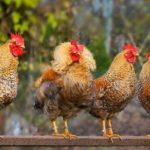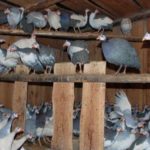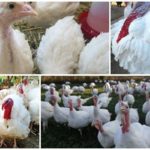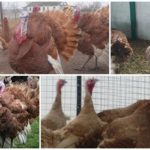Increasingly, land owners are thinking about raising poultry, in particular turkeys. Often this activity becomes a promising business if the owner takes a serious approach. It is enough to have a little theoretical knowledge and initial capital - and you can purchase chicks for fattening. The most important thing is to create the necessary conditions for competent raising of turkeys at home.
- Features of the bird
- Differences between males and females
- Features of oviposition
- How much do turkeys weigh?
- Pros and cons of breeding
- What breeds are popular
- Poultry house requirements
- Walking area
- Required climate
- Features of wintering
- Diet planning
- Turkey poults
- Adults
- Feeding during the breeding period
- Fattening for slaughter
- Bird breeding
- Diseases and prevention
- How profitable is breeding?
Features of the bird
Farmers who breed turkeys and have some experience are well aware that raising them is much more difficult than other poultry. They are more demanding in terms of maintenance and feeding. Turkeys have a hard time withstanding the slightest errors in diet and environmental conditions. However, if you carefully study the basic rules of keeping, the result will please any novice poultry farmer.
From other poultry Turkeys have low egg production, slow development. In addition, these birds are gluttonous, but at the same time they have high rates of meat productivity. Turkeys are cocky birds. It is for this reason that about three dozen females and 3-4 males are kept in one poultry house room.
Turkey is a bird from the order Galliformes. They have short but powerful wings, a small wide tail and strong legs. It is easy to recognize the bird: on its head there are warty growths called corals. Farmers notice that they change color depending on their mood. In normal conditions, the growths are bright red; when the bird is aggressive, the color changes to purple.
Differences between males and females
Every farmer should be able to distinguish a male from a female. It is easy to determine gender based on some characteristics:
- males are more massive;
- a skin process (horn) is noticeable on the forehead of the male; in the female it is not so developed;
- males lack feathers on their heads;
- the legs of males have spurs;
- the plumage of females is not so attractive;
- Females have very soft down and feathers, while males have much harder ones.
When the chick reaches one day of age, its sex is determined. Males have the same length of feathers on their wings, so their outline is smoother.However, after some time, this sign disappears, and then it will be possible to find out the sex of the turkey poults in a couple of months.
To determine the sex of the chick, place it on the palm of your hand with its belly up and gently press the underbelly with your finger. In boys, the cloaca moves outward; a small tubercle will be noticeable on its inner membrane - a copulatory organ in its infancy.
At home, turkeys live up to 10 years. However, the optimal lifespan for birds is no more than 2 years. For males with high reproductive function, this period is 5-7 years. Long life expectancy leads to decreased meat quality.
Features of oviposition
Each breed begins laying eggs at different times. Heavyweights begin to lay eggs at 8-9 months, light crosses lay their first clutch no later than 7.5 months.
Females lay eggs in the spring, when daylight hours increase to 10 hours. However, if you take care of artificial lighting for birds, egg laying begins much earlier. Long daylight hours are also beneficial for males, since their period of puberty is significantly accelerated.
In general, egg production is affected by: age, health, environmental conditions. Females show greater productivity by the age of 1; in the second year of life, egg production begins to gradually decline.
How much do turkeys weigh?
The weight of a male adult is from 10 to 30 kg. In some cases their weight reaches 35 kg. A female turkey weighs much less - from 5 to 12 kg. Turkeys are considered one of the largest poultry. Only the ostrich can compare in size with them. Weight largely depends on the cross. There are heavy, medium and light turkeys.
Pros and cons of breeding
Many farmers are forced to abandon this very profitable business because they were unable to fully appreciate the advantages and disadvantages of turkey breeding. They are frightened by the relatively low egg production, the high requirements of poultry for clean water and diet, the tendency to infectious diseases and the high mortality of chicks. In addition, turkeys are prone to obesity, and this leads to the development of certain diseases and decreased productivity. However, these problems can be solved if you study in advance the intricacies of breeding and the features of caring for chicks.
Experienced farmers note the following obvious advantages of raising turkeys:
- rapid weight gain;
- obtaining dietary meat with excellent taste;
- breeding costs pay off in a short time;
- eggs have dietary qualities and a unique taste.
In addition, in order to make a good profit, you can sell not only meat and eggs, but also feathers, feathers, young animals and newborn chicks.
What breeds are popular
For beginning farmers, it is important to understand that there are turkey breeds most suitable for home breeding. Therefore, before making a choice in favor of one breed or another, you need to study the characteristics of the birds.
The Black Tikhoretskaya has shiny black plumage. These are birds with powerful muscles and a slightly elongated body. The head is small with a wide nose. The breed belongs to the light group, the weight of males reaches 10 kg, females - 5 kg. Black Tikhoretsky turkeys are stress-resistant, trusting towards people and peaceful, the females have a developed maternal instinct.
French breed turkeys reach 12-13 kg. They are active and mobile, so they need to have a place to walk.Already at four months, individuals reach their maximum weight, and they can be slaughtered for meat. This breed does not require expensive feed additives in its diet. Chicks have a high survival rate compared to other breeds - about 80-90% to adulthood.
The Grade Maker breed was specially bred taking into account the necessary profitability parameters. These birds can be sent for slaughter as early as 2-3 months, while the carcass has a marketable appearance, and the meat meets the stated requirements. Adult birds and young birds feel well under normal conditions; chicks are resistant to many infectious diseases that are inherent in turkey poults.
The white broad-chested breed is the fruit of the labors of American breeders. The birds are slightly smaller in size than broilers, but at the age of one and a half months, males reach 17 kg. Turkeys are distinguished by their slightly elongated body shape, wide chest, and powerful legs. Females begin laying eggs at 9 months. During the season they lay more than 120 eggs, each weighing up to 90g. This is a high egg production rate for any breed of turkey.
The station wagon breed is characterized by rapid weight gain. The birds are large - males reach 17 kg, females - up to 10 kg. They have white plumage, long legs, a powerful body and wide wings. Turkeys of this breed have strong immunity and high survival rate. Egg production is low - up to 70 eggs per year. The station wagon is common in many countries.
| Breed | Peculiarities
|
Male, kg
|
Female, kg | Egg production,
pcs/year
|
| Black Tikhoretskaya
|
juicy meat,
small layer of fat high taste qualities. |
10 | 5
|
100 |
| French
|
high immunity,
unpretentiousness to feed, meat yield more than 65%.
|
16
|
9
|
120
|
| Grade maker
|
meat cross,
unpretentiousness to the diet, resistance to stress.
|
20
|
11
|
100
|
| White broad-breasted
|
demanding diet
high degree of precocity.
|
17 | 7 | 100-120 |
| Station wagon
|
precocity,
good productivity unique taste qualities.
|
17
|
10
|
70
|
Poultry house requirements
You can build a turkey house yourself, but you should familiarize yourself with the basic requirements for a poultry house. At the initial stage, you can allocate any barn for the premises, and then build the most suitable structure that will fully satisfy the basic needs of the birds. Turkeys should be kept in a spacious and clean room.
General requirements include:
- for an adult, at least 1 m is required2 area, for chicks - 0.25 m2;
- an outdoor exercise pen that is adjacent to the main premises;
- separate compartments for adult birds to eliminate conflicts between males;
- a room for newborn turkey poults with the necessary conditions for the survival and subsequent maturation of young animals;
- dry bedding - turkeys do not tolerate moisture;
- perches, based on the number of livestock, nesting houses;
- boxes with sand in each compartment;
- drinking bowls and feeders;
- absence of drafts;
- forced ventilation;
- lighting, including additional lighting in winter.
The farmer must ensure the cleanliness of drinking bowls, feeders, and the premises as a whole. Keeping the poultry house clean will reduce the risk of possible diseases.
Walking area
When building a turkey poultry house and its subsequent arrangement, special attention should be paid to the walking area; this should be discussed in more detail. Exercise is beneficial for poultry, including turkeys. A daily walk has a beneficial effect on the physical development of birds and their productivity. Exercise is especially useful for turkeys, since these birds are more prone to obesity than others.
The best place for walking is an equipped paddock.Its territory should be well fenced; it is advisable to use a metal mesh for these purposes. Birds should have free access to water and food. It is advisable for the area to have vegetation - grass and small shrubs.
Required climate
Turkeys should be raised at a temperature that is comfortable for them. Microclimate, including temperature, affects the health and productivity of poultry. The lowest outdoor temperature that turkeys can tolerate is -15 °C (if the frost is short-lived).
The optimal temperature in the room for adults is 12-16 °C, for newborn chicks it is much higher.
| Chick age | Required temperature |
| up to 5 days | 22°C |
| 5-20 days | 16-20 °C |
| 20-25 days | not lower than 12 °C |
How comfortable birds are indoors can be determined by their appearance and behavior. Turkeys have a healthy appetite and drink water regularly if the temperature suits them. The flock is distributed evenly in the house.
When turkeys are cold, they huddle together and spread their wings slightly to create an extra layer of air. When the room is hot and humidity is high, birds breathe faster, their wings spread to the floor, and their beaks are open. At the same time, turkeys refuse to eat, but often drink.
Features of wintering
In regions with harsh weather conditions, it is necessary to provide the room with additional heating. You can increase the room temperature using the following devices:
- infrared lamps;
- electric heaters;
- heat collectors;
- gas boilers.
However, before using heating devices, it is important to inspect the room for cracks. Window and door openings should be insulated.Also a prerequisite for winter poultry care is the absence of dampness, drafts, additional lighting, enhanced diet and the presence of dry bedding.
Diet planning
Feeding directly depends on the age of the turkeys. In addition, you should pay attention to the purpose of the birds. The diet is also prepared based on the time of year. During winter, birds require more food because they spend a lot of energy keeping warm.
Turkey poults
The need of chicks for food varies depending on age; it largely depends on the breed and purpose of the birds. Kids need: cottage cheese, greens, boiled potatoes, eggs and yeast. This diet allows the bird to grow quickly and develop fully.
The basic diet consists of the following products:
- corn grits;
- wheat cereal;
- wheat bran;
- shells and chalk.
From the 10th day of life, green mass is added to the chicks, starting from 1 month, they are fed with coarse mixtures, and salt is gradually introduced. At 2 months, turkey poults are transferred to an adult diet, but in a ground, crushed form.
Adults
Adult birds need to be provided with adequate nutrition 3 times a day. In the morning and evening, it is necessary to feed turkeys with grain mixtures, and during the day add succulent feed and wet mash. It will not be possible to raise poultry on grain alone, so it is worth adding vitamin supplements in the form of acorns, pine needles, and chestnuts to the diet.
In the summer, the bird itself will find useful herbs, but in winter it needs bunches of dried herbs, which will be prepared in advance. Birch and aspen brooms are hung around the poultry house so that turkeys can feast on the leaves.
Feeding during the breeding period
During the breeding period, birds need more energy, so the diet must be complete.At the same time, males show poor appetite at this time; different types of root crops must be provided for them to maintain body weight. It is also necessary to add legumes and cottage cheese.
It is important to provide egg-bearing females with proper nutrition, consisting of yeast, cottage cheese and red carrots. Lush forbs and vitamin and mineral supplements are also important for them.
Fattening for slaughter
It is necessary to introduce a special diet for subsequent slaughter starting from 4-5 months. At this time, the bird gains the required weight. In addition to vitamin supplements, she should receive:
- roots;
- greenery;
- milk and cottage cheese;
- fresh fish and meat waste;
- crushed eggshells.
One month before the expected slaughter, each bird should receive up to 800 g of feed per day.
Bird breeding
Many farmers try to obtain eggs on their own farm. To do this, you need to organize a parent herd. It includes turkeys with high productivity rates. The herd consists of 1 male and 5-7 females, whom he cares for.
Mating is difficult, since the birds have a large body weight, and the males have large claws with which they injure the female. The process is also hampered by the birds' voluminous plumage.
Natural mating is suitable for a small farmstead, but large farms often resort to artificial insemination. The sperm of the producers is selected and injected into prepared females. One dose of sperm is enough to inseminate 20 turkeys. This method preserves the health of the female and allows for the rational use of breeding males.
Diseases and prevention
Farmers who keep turkeys on their farms note a tendency to the following diseases:
- smallpox;
- mycoplasmosis;
- helminthic infestations;
- histomoniasis;
- tuberculosis.
Disease prevention consists of proper diet and appropriate living conditions. Newborn turkey poults are fed glucose and vitamin preparations. It is important to disinfect the premises to avoid outbreaks of infectious diseases.
How profitable is breeding?
Contrary to the opinion of beginners, raising turkeys is much more profitable than keeping and breeding chickens. However, it should be taken into account that investments will be required, especially in the first months, initial capital, and the first profit will appear 5-6 months after the slaughter of the bird. After this, the farmer purchases a new number of turkeys and continues to develop the business.

